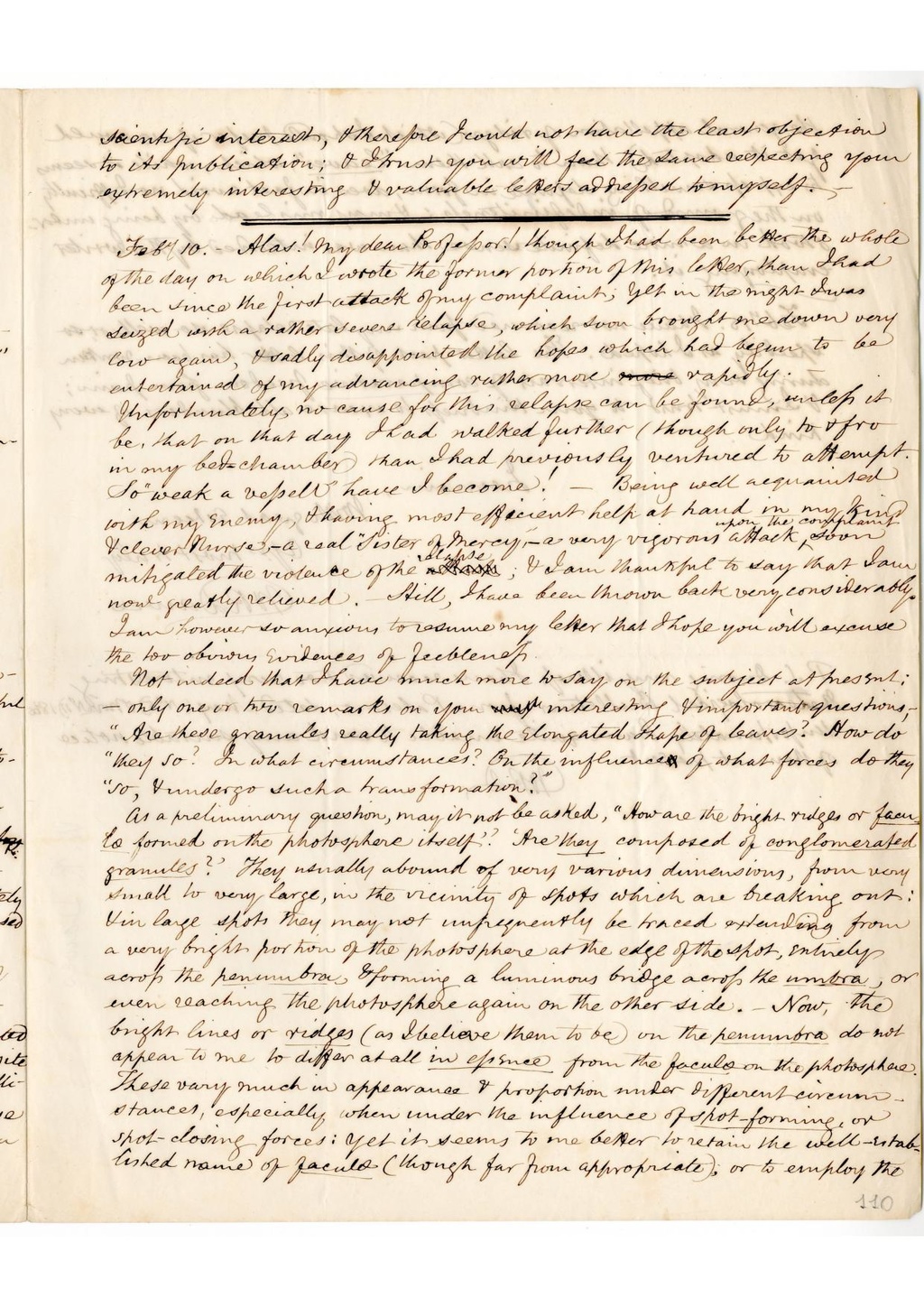scientific interest, and therefore I could not have the least objection to its publication; and I trust you will feel the same respecting your extremely interesting and valuable letters addressed to myself. -
_____________
_____________
Febr 10. - Alas! My dear Professor! though I had been better the whole of the day on which I wrote the former portion of this letter, than I had been since the first attack of my complaint; yet in the night I was seized with a rather severe relapse, which soon brought me down very low again, and sadly disappointed the hopes which had begun to be entertained of my advancing rather more rapidly. Unfortunately, no cause for this relapse can be found, unless it be, that on that day I had walked further (though only to and fro in my bed-chamber) than I had previously ventured to attempt. So "weak a vessell" have I become! - Being well acquainted with my enemy, and having most efficient help at hand in my kind and clever Nurse, - a real "Sister of Mercy," - a very vigorous attack upon the complaint soon mitigated the violence of the relapse; and I am thankful to say that I am now greatly relieved. - Still, I have been thrown back very considerably. I am however so anxious to resume my letter that I hope you will excuse the too obvious evidences of feebleness.
Not indeed that I have much more to say on the subject at present; - only one or two remarks on your interesting and important questions, - "Are these granules really taking the elongated shape of leaves" How do they so? In what circumstances? On the influence of what forces do they so, and undergo such a transformation?"
As a preliminary question, may it not be asked, "How are the bright ridges or faculae formed on the photosphere itself'? 'Are they composed of conglomerated granules?' They usually abound of very various dimensions, from very small to very large, in the vicinity of spots which are breaking out: and in large spots they may not infrequently be traced extending from a very bright portion of the photosphere at the edge of the spot, entirely across the penumbra, and forming a luminous bridge across the umbra, or even reaching the photosphere again on the other side. - Now, the bright lines or ridges (as I believe them to be) on the penumbra do not appear to me to differ at all in essence from the faculae on the photosphere. These vary much in appearance and proportion under different circumstances, especially when under the influence of spot-forming, or spot-closing forces: yet it seems to me better to retain the well-established name of faculae (though far from appropriate); or to employ the
Page:ASC 1866 01 31 13-53.pdf/3
From GATE
This page has not been proofread
